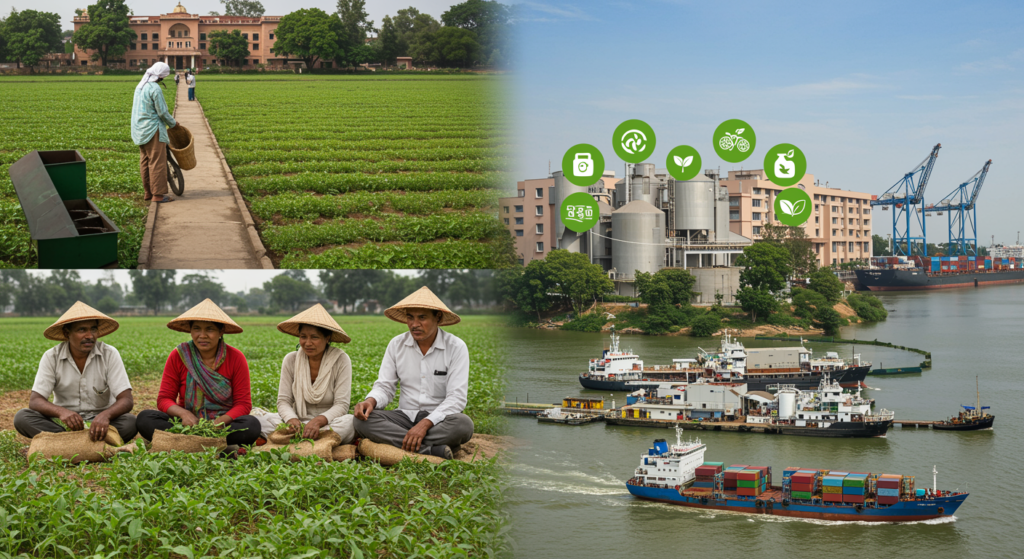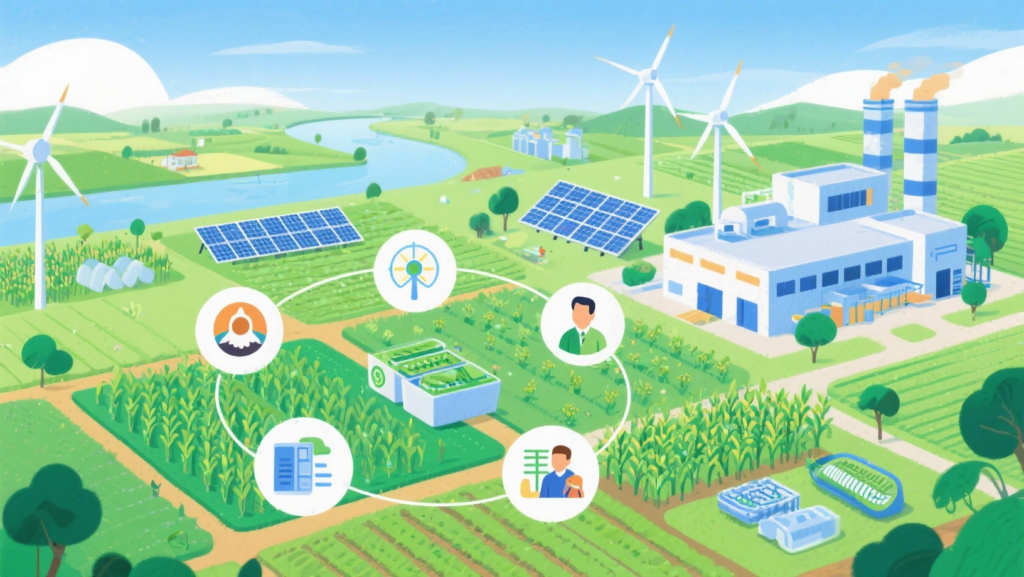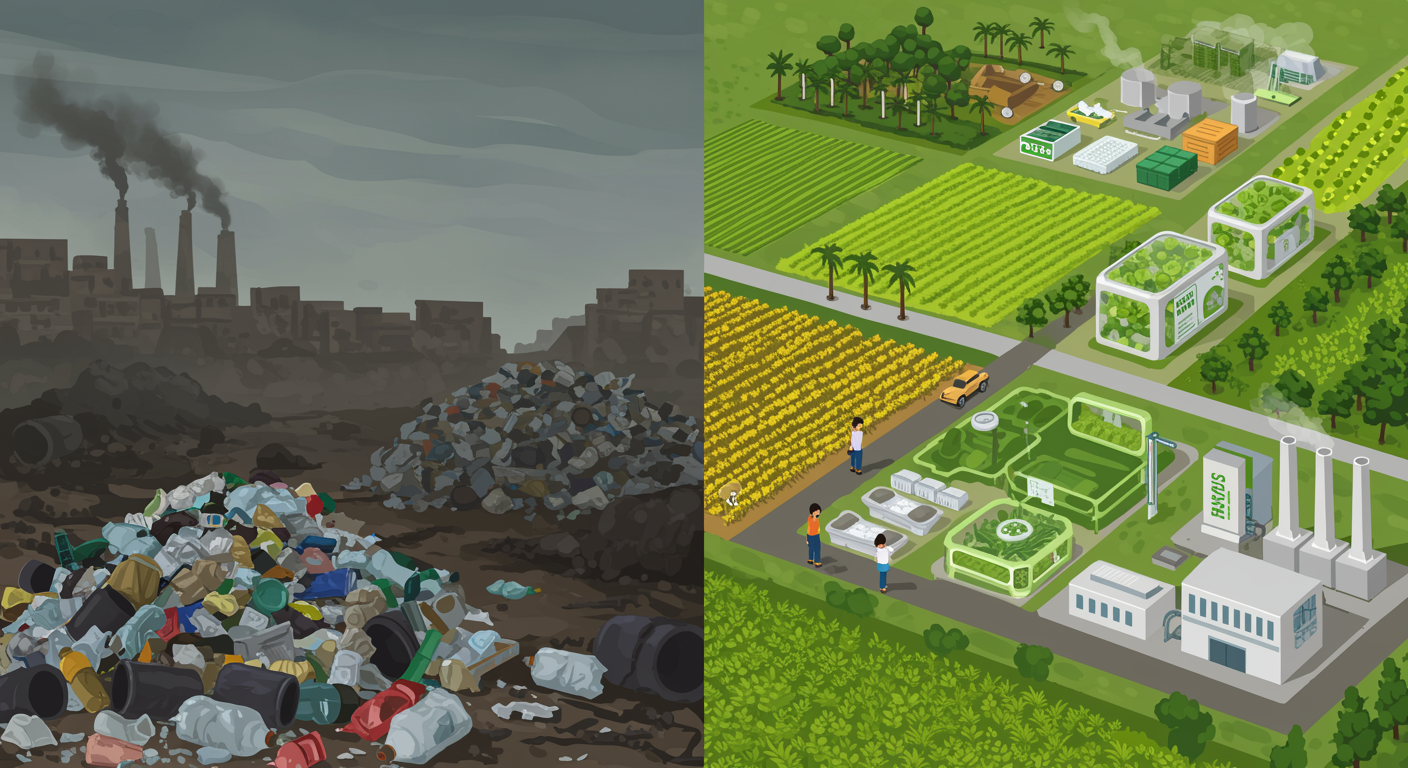India’s plastic consumption has reached staggering heights, with the country generating over 3.3 million tonnes of plastic waste annually. As environmental concerns mount and regulatory pressures intensify, bioplastics are a promising alternative that could revolutionize India’s approach to sustainable packaging and manufacturing.
Understanding Bioplastics: A Game-Changer for Sustainable India
Bioplastics represent a fundamental shift from petroleum-based materials to renewable, plant-based alternatives. Unlike conventional plastics derived from fossil fuels, bioplastics are manufactured from organic materials such as corn starch, sugarcane bagasse, rice husks, and other agricultural residues – resources that India possesses in abundance.
These eco-friendly materials offer two primary advantages: they’re biodegradable under specific conditions and sourced from renewable feedstocks. This dual benefit positions bioplastics as a crucial component in India’s circular economy vision and waste management strategy.
The Indian Bioplastics Market: Current Landscape and Growth Trajectory
India’s bioplastics market is experiencing remarkable momentum, with industry projections indicating a compound annual growth rate (CAGR) of over 15% through 2030. This growth stems from multiple converging factors: stringent government regulations on single-use plastics, increasing corporate sustainability commitments, and rising consumer awareness about environmental impact.
The market encompasses various applications, from food packaging and agricultural films to medical devices and automotive components. Key sectors driving demand include food and beverage packaging, where brands seek sustainable alternatives without compromising product safety or shelf life.
Ecolastic and the Innovation Ecosystem
Companies like Ecolastic are pioneering the development of advanced bioplastic solutions tailored to Indian market needs. These innovators focus on creating cost-effective, performance-driven alternatives that match or exceed conventional plastic properties while maintaining environmental benefits.
The innovation landscape includes startups developing novel formulations, established chemical companies expanding into bio-based products, and research institutions collaborating on next-generation materials. This ecosystem approach accelerates technological advancement and market adoption across diverse industries.
Navigating Key Challenges in the Indian Context
Raw Material Availability and Competition
While India boasts substantial agricultural residues, securing consistent, high-quality feedstock poses challenges. Competition exists between bioplastic manufacturers and other industries utilizing agricultural waste, including paper production and biomass energy generation. Seasonal availability fluctuations can impact production planning and costs.
Cost Competitiveness and Market Acceptance
Bioplastics typically command premium pricing compared to conventional alternatives, creating adoption barriers for cost-sensitive markets. Manufacturing scale limitations, higher processing costs, and limited supply chains contribute to this price differential. However, economies of scale and technological improvements are gradually narrowing this gap.
Infrastructure and Processing Capabilities
India’s bioplastics industry requires significant infrastructure development, including specialized processing equipment, quality control systems, and distribution networks. Many existing plastic processing facilities need modifications or complete overhauls to handle bioplastic materials effectively.
Consumer Education and Market Awareness
Despite growing environmental consciousness, many consumers remain unfamiliar with bioplastic benefits and proper disposal methods. Misconceptions about biodegradability timelines and composting requirements can hinder market acceptance and environmental effectiveness.
Opportunities for Sustainable Growth

Government Support and Policy Framework
India’s regulatory environment increasingly favors bioplastic adoption. The Plastic Waste Management Rules, Extended Producer Responsibility guidelines, and various state-level single-use plastic bans create favorable market conditions. Government initiatives supporting research and development, manufacturing incentives, and import duty structures further enhance industry prospects.
Agricultural Integration and Rural Development
Bioplastic production offers unique opportunities to integrate agricultural communities into the value chain. Farmers can generate additional income by supplying feedstock materials, while processing facilities in rural areas create employment opportunities and support local economic development.
Export Potential and Global Market Access
India’s competitive manufacturing costs and abundant raw materials position the country as a potential global bioplastics hub. Export opportunities to environmentally conscious markets in Europe and North America could drive significant industry growth and foreign exchange earnings.
Technological Innovation and R&D Advancement
Ongoing research into improved bioplastic formulations, enhanced processing techniques, and novel applications creates continuous growth opportunities. Collaborations between academic institutions, industry players, and government research organizations accelerate innovation cycles and commercial viability.
Future Outlook: Building a Sustainable Materials Economy

The bioplastics industry in India stands at a critical juncture where environmental necessity meets economic opportunity. Success depends on addressing current challenges through coordinated efforts involving government policy support, industry investment, and consumer education initiatives.
Companies pioneering this space must focus on developing locally relevant solutions that balance performance, cost, and environmental benefits. Strategic partnerships across the value chain – from feedstock suppliers to end-user industries – will be essential for scaling operations and achieving market penetration.
As India progresses toward its sustainability goals and circular economy aspirations, bioplastics will play an increasingly vital role in reducing plastic pollution, supporting agricultural communities, and positioning the country as a leader in sustainable materials innovation. The convergence of regulatory support, technological advancement, and market demand creates an unprecedented opportunity for transformative growth in India’s bioplastics sector.





